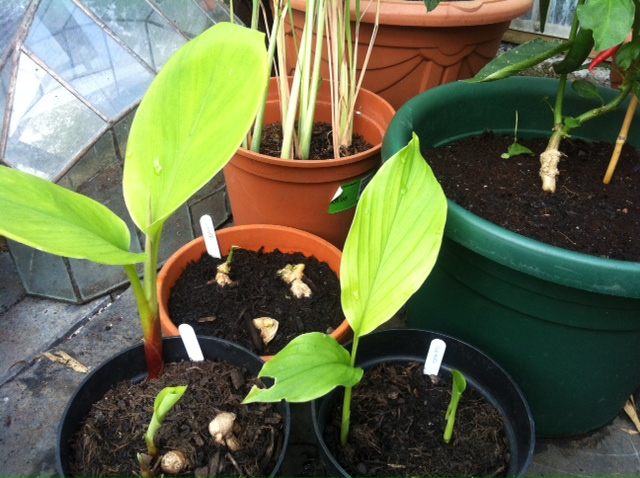
This time last year I visited a Thai woman living in Dorset who grew the crops of her homeland in her greenhouse. On arriving in England, Nid had despaired of ever growing anything she knew, but she said: ‘I soon found out why everyone in England has a greenhouse’. She got one herself and set about creating microclimates within them and growing the crops she would need in order to recreate the dishes she loved to cook in Thailand. Her three greenhouses were overflowing with chillies and Thai bitter gourds, Ceylon spinach and rats-tail radishes.
Nid’s resourcefulness was most apparent in her use of leaves. Despite her greenhouse, lots of the crops she loved would not reach full maturity in England. Kaffir limes would never fruit, ginger would never make a large root, and so on. And so, she used the parts of the plant that would grow: the leaves. She showed me ginger plants that were growing away beautifully, but that would never have time in the average growing season to bulk up. She snips the leaves off of the plant, slices them into ribbons, and throws them into stir fries and other dishes at the last moment, to get that fresh ginger taste. And she does the same with other members of the ginger family, particularly turmeric and galangal.
I love the idea of finding this unexpected crop, and decided to grow some myself. Ginger of course was easy enough to find. I went to the grocer’s and rifled through their pile of nobbly ginger roots until I found one that was nobblier than all the others: you ideally want a root that is already thinking about starting to grow, and the round swellings on the root I bought, suggested that mine was very much keen to get going. I brought it home and nestled it shallowly into a pot of compost, about half the root buried and half protruding. The others were trickier to find, but I went to www.thai-food-online.co.uk and had a virtual rummage in their ‘Fresh Thai Herbs’ section, emerging victorious with turmeric, galangal, a few sticks of lemon grass and a box of tamarind seeds. The turmeric and galangal being roots of the ginger family, there was a good chance they would still be alive and would behave very like the ginger. I had also seen lemon grass growing at Nid’s and tamarind growing in another allotment earlier in the year. Much like Nid’s favoured crops, tamarind is unlikely to produce seeds in the UK, but the leaves are often used in dals and other curries to add a deliciously sour note.
So all arrived in spring and were planted alongside the ginger, the tamarind seeds stripped of their gooey coating and pushed under the soil, the lemon grass sticks sticking up out of their pot. I planted them, watered them, and put them in a warmish place and waited. And waited and waited. To be honest, I have long thought that my experiment had failed and that even ginger leaves were a step too far for me but then finally, in the last few weeks, leaves have emerged from everything bar the tamarind. Next time, I would start them somewhere warmer, perhaps the propagator, as they obviously need plenty of coaxing. So far there has only been enough for a nibble of each leaf, and predictably I am most fond of familiar straight ginger, which may soon have produced enough to make me a cup of fresh ginger leaf tea. And as soon as the others have emerged further, I will get more adventurous with my stir fry greens.


